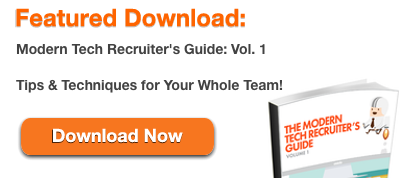Being charged with finding and vetting the talent that will take your organization to new heights is no easy task or trivial responsibility. And often, it's not enough to be looking, because missing out on top hires and not growing your team can prove terribly costly. Your organization needs top talent, and it needs them yesterday.
or trivial responsibility. And often, it's not enough to be looking, because missing out on top hires and not growing your team can prove terribly costly. Your organization needs top talent, and it needs them yesterday.
Despite this urgency, the hiring cycle can take frustratingly long, and if your organization isn't nimble, you could miss out on candidates if they receive other offers. Cutting down on time-to-hire will also cut down on the CEO's favorite recruiting metric, cost-per-hire. You'll also provide a better, more responsive candidate experience, prove to the candidate how bullish you are on them, and be able to move on to the next hire. Below are a handful of tactics you can use to speed up your hiring cycle and build your team immediately!
Track Engagement
Tools like Toutapp and Hubspot Signals allow you to track emails and see when they've been opened. This will allow you to see in real time when you are on a candidate's radar, and perhaps supplement that outreach with a tweet or other means of messaging. At the very least, you will know that a candidate is reading your emails and can appropriately hit turbo on your follow-up.
Same Day Scheduling
Typically, you'll plan on bringing around a half dozen candidates in to interview for a specific req. If at all possible, try to schedule them on the same day or within as small a timeframe as possible. This will allow all the interviewees to be more fresh when they are comparing candidates, and they won't have to continually interrupt their normal workflow to head to interviews.
No Rest for the HMs
Once the interviews are complete, encourage the team to share notes and give recommendations as soon as possible. Many tools (we happily use Greenhouse) offer an easy-to-use review system, which will allow you to receive the freshest criticisms and get a sense of whether the candidate is moving towards an offer.
Indeed, one of the best way to compete with larger organizations who might be able to offer bigger salaries, more perks, or a bigger brand is to move so quickly they just can't get their offers out fast enough to keep up. Consolidate all the thoughts on the candidate as soon as possible, and you can start formulating your next move.
Refer Madness
Last but not least, putting a robust Employee Referral Program together can drastically reduce your time-to-hire. With their reputation on the line, employees are likely to only refer highly-qualified candidates, meaning you don't have to dredge through piles of unqualified resumes or tiptoe through the tulips with a seemingly qualified candidate only to later learn they're not what you're looking for. Also, candidates are more amenable to conversations when you share a mutual contact.
When it comes to ERPs, remember that it is not a set and forget practice. Sit down with your co-workers and actively pump them for information about their active networks and who they might know. They may have a connection whose relevance is obvious to you, but to an average employee who doesn't spend all day thinking about recruiting, it may not occur that some contacts would be perfect for your organization.
What strategies have you used to decrease time-to-hire? Leave a comment or tweet @EnteloRob!

